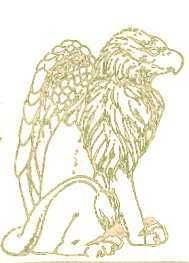Search for ferns by common name, latin name, USDA Zone, or by keywords like whether the fern is Evergreen, Sub-Evergreen, Semi-Evergreen, Deciduous, or Wintergreen or just browse our current fern selections.
Orange-croziered Wallich's Wood Fern (Dryopteris wallichiana subsp. nepalensis 'Molten Lava')
Orange-croziered Wallich's Wood Fern (Dryopteris wallichiana subsp. nepalensis 'Molten Lava')
Synonyms/Also Sold As: Dryopteris wallichiana subspecies nepalensis, Dryopteris wallichiana ‘Jurassic Gold’
This subspecies of Wallich's wood fern caused no end of confusion when I first grew it from spores collected in Martin Rickard's garden in 1991. It was labeled as D. lepidopoda in his collection at that time. I sent the samples of this sowing off to Dr. Barbara Hoshizaki as D. lepidopda and the identification she came back with was that it was D. wallichiana. We corresponded back and forth as I looked closely at the plant I had brought back from England labeled as D. lepidopda and she looked at the plants from the spores I had brought back. It wasn't until I sent her a second set of sporlings sown from spores grown from the D. lepidopoda I brought home as a plant that we finally sorted out the confusion and determined that it was most likely Dryopteris wallichiana subspecies nepalensis. The reason that this subspecies could be confused with lepidopoda is that it has a slightly orange cast to the newly emerging croziers and the fronds' surface is more lustrous, with the pinnae spaced further apart than on the typical form of wallichiana that has been in cultivation for so long. There is also a distinct difference between the length of the basal pinnae (lowest set of leaflets). To distinquish it from the other wallichiana in the trade I nick-named this form 'Molten Lava' due to the muddy orange new foliage reminiscent of cooling lava flows. It has recently been reintroduced to the commercial market by liner growers under the new name Dryopteris wallichiana ‘Jurassic Gold’, which is somewhat confusing as it usually displays more ochre, red and pink tones than yellow!
Frond Condition: Evergreen
Mature Height: 3-4'
Origin: Asia
Cultural Requirements: Some Shade, Partly Shaded, Full Shade. Evenly Moist
USDA Zones: 6,7,8,9









